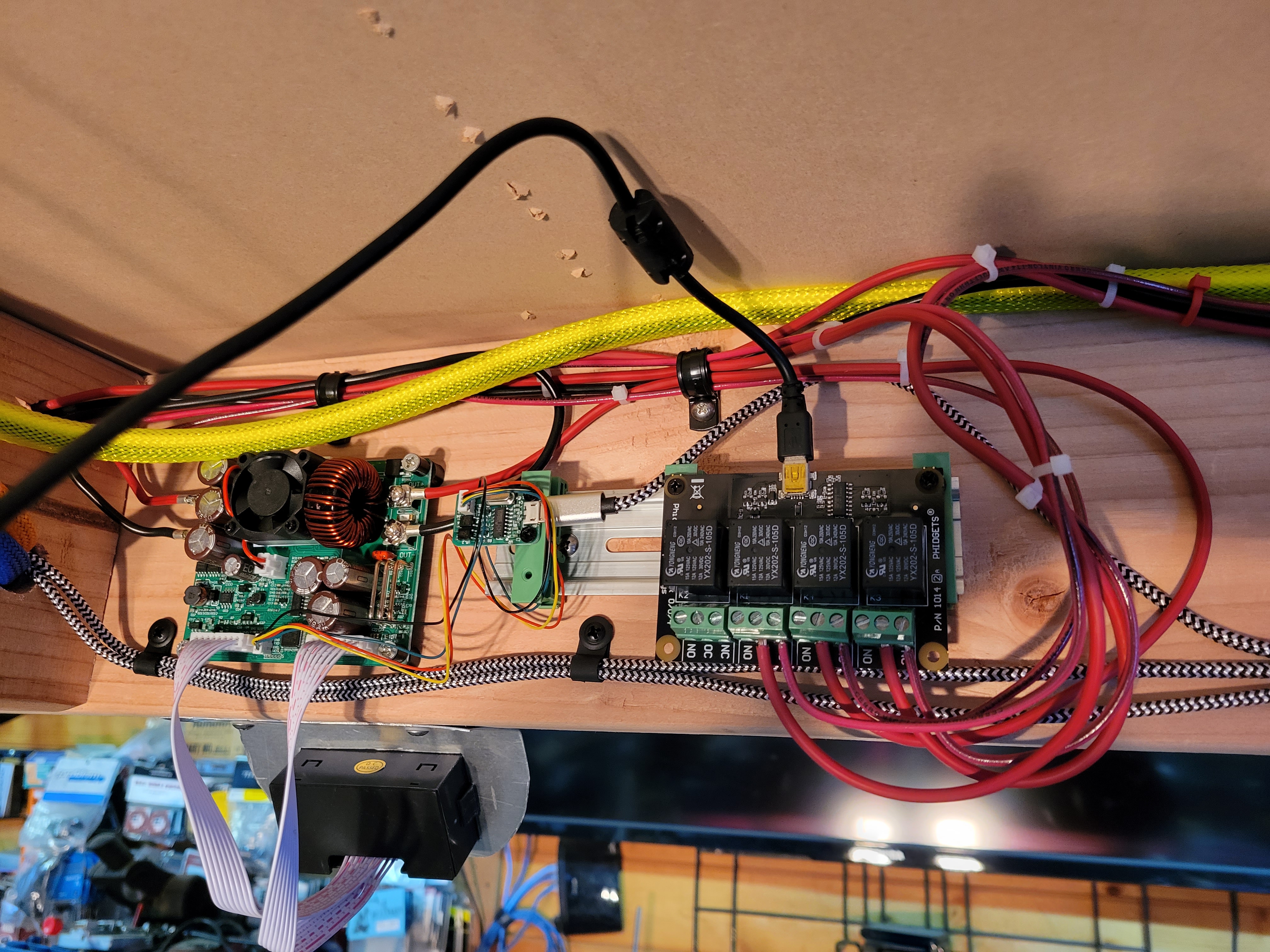
Finally making some good progress on SR3. Pretty much have completed all wiring, power control, timing system components, gantries, and all driver’s stations.
Today I actually connected SlotTrak and Race Coordinator to the track and, after some tweaking and configuration changes, everything worked!
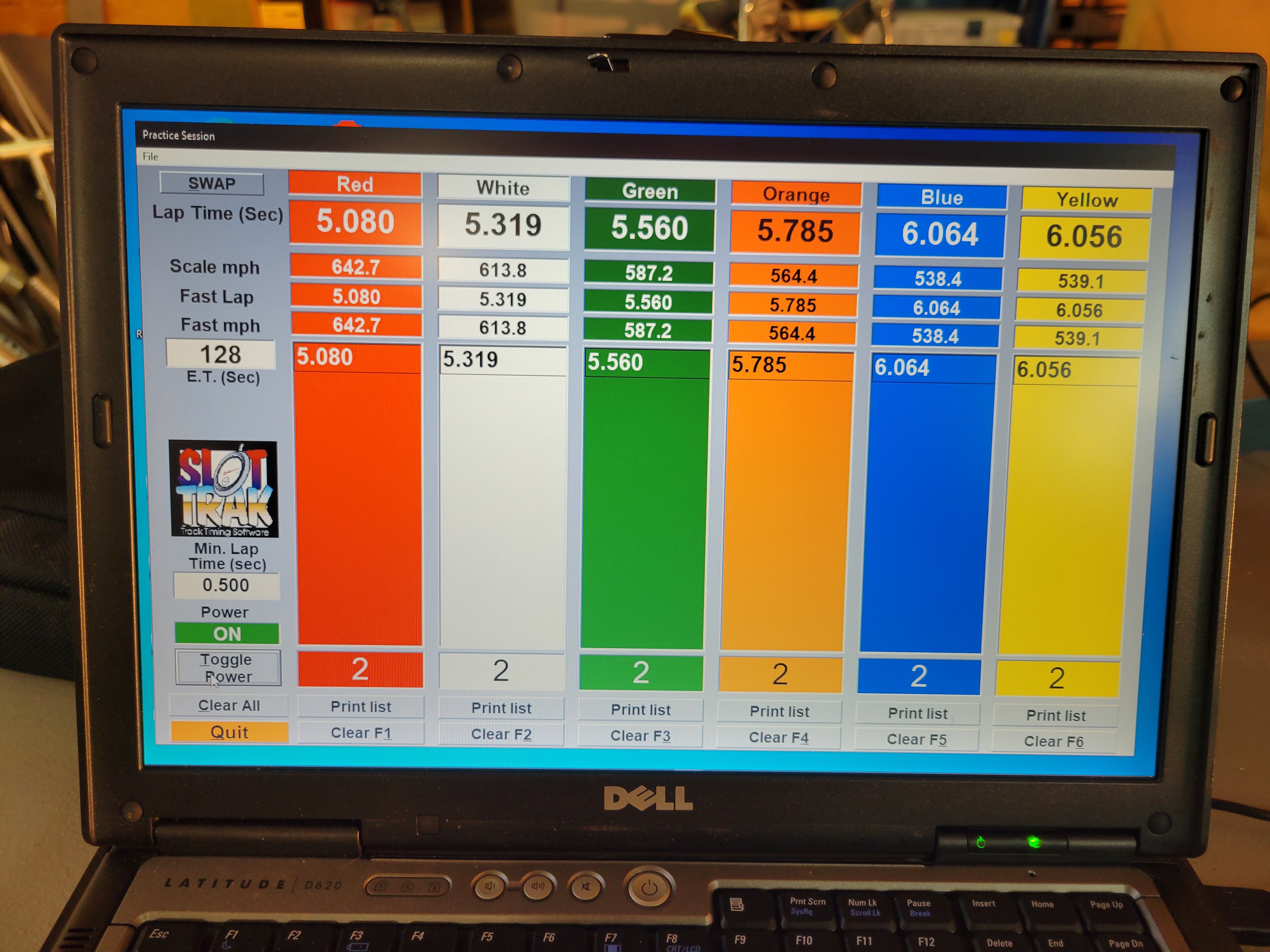 I don’t have the track sections connected to each other yet but I tested the gantries and all the power control logic by hand and with a test car on one section. Both seemed to work as expected and nothing caught fire.
I don’t have the track sections connected to each other yet but I tested the gantries and all the power control logic by hand and with a test car on one section. Both seemed to work as expected and nothing caught fire.
All that is left to do is connect all the track sections to each other, clean all the damn sawdust off the table and track, run some laps on each lane to make sure all the rails and sections are in good shape. Once that’s done, it’ll be time to install the crash barriers and get things ready for a track day to fully flush things out.
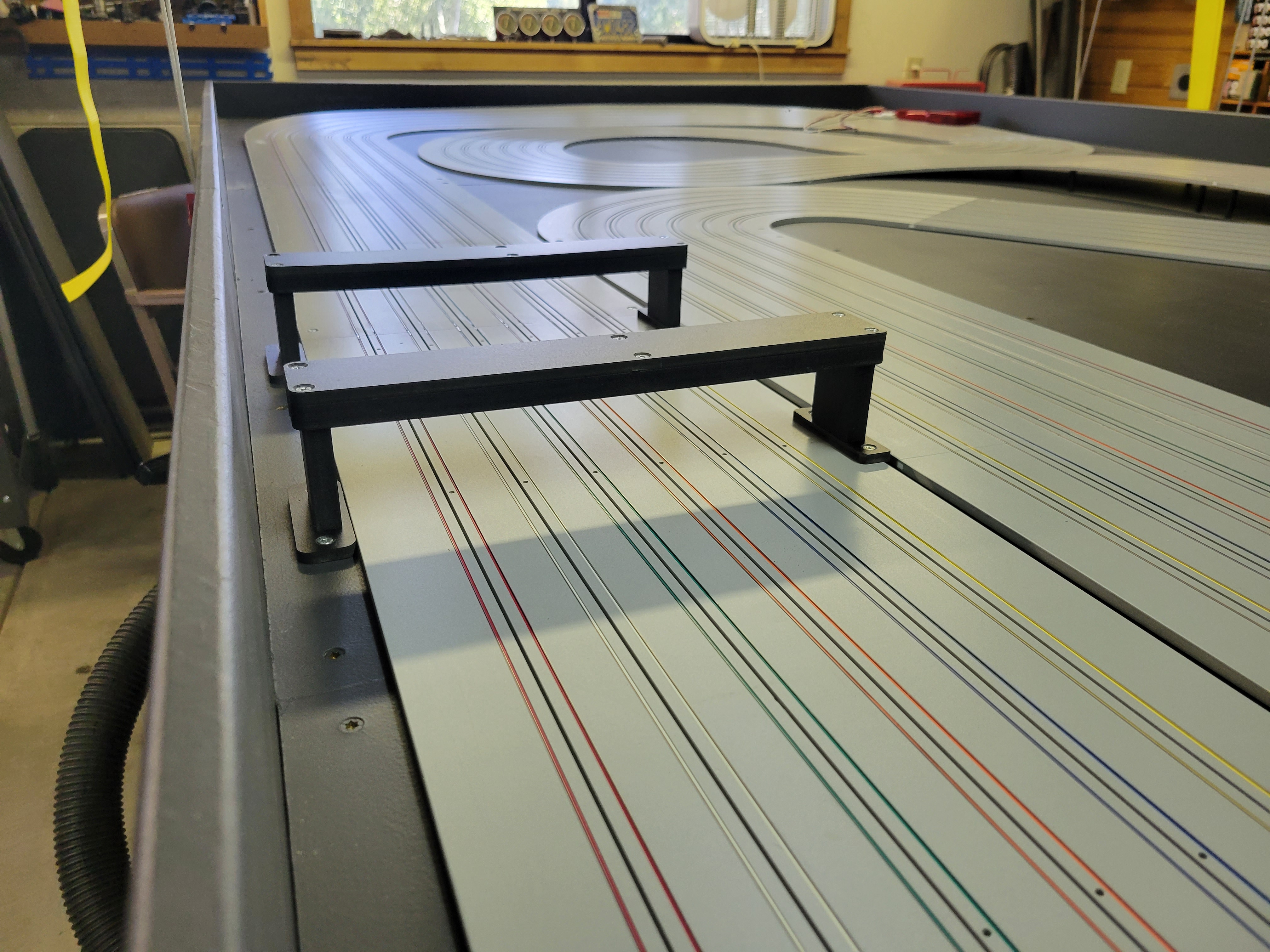 Before I get to the above, I’m going to lift the track to the ceiling and clean out the entire garage. Need to blow and vacuum the whole place out due to all the damn sawdust, wire insulation, tie-wrap debris, etc. Also need to get rid of a bunch of bikes and bike parts. This track takes up a bit more space and will force me to get rid of stuff that has been hanging on the walls or just laying around forever. I also need to wash my motorcycles before the sawdust becomes permanent.
Before I get to the above, I’m going to lift the track to the ceiling and clean out the entire garage. Need to blow and vacuum the whole place out due to all the damn sawdust, wire insulation, tie-wrap debris, etc. Also need to get rid of a bunch of bikes and bike parts. This track takes up a bit more space and will force me to get rid of stuff that has been hanging on the walls or just laying around forever. I also need to wash my motorcycles before the sawdust becomes permanent.
Anyway, I’m getting close. Still haven’t chosen a new laptop for SR3 yet. I think I’ll flush it out with an old and slow one just to make sure the design works and all the components that are tied together with the one USB hub will work. USB is fast but having nine devices going through one PC USB port could present some problems, we’ll see.
The very cool thing about this hardware setup is that Race Coordinator and SlotTrak seem to work well with the hardware. I don’t have to flip any switches, reboot, or anything, just fire up the RMS and go. I’m digging that.
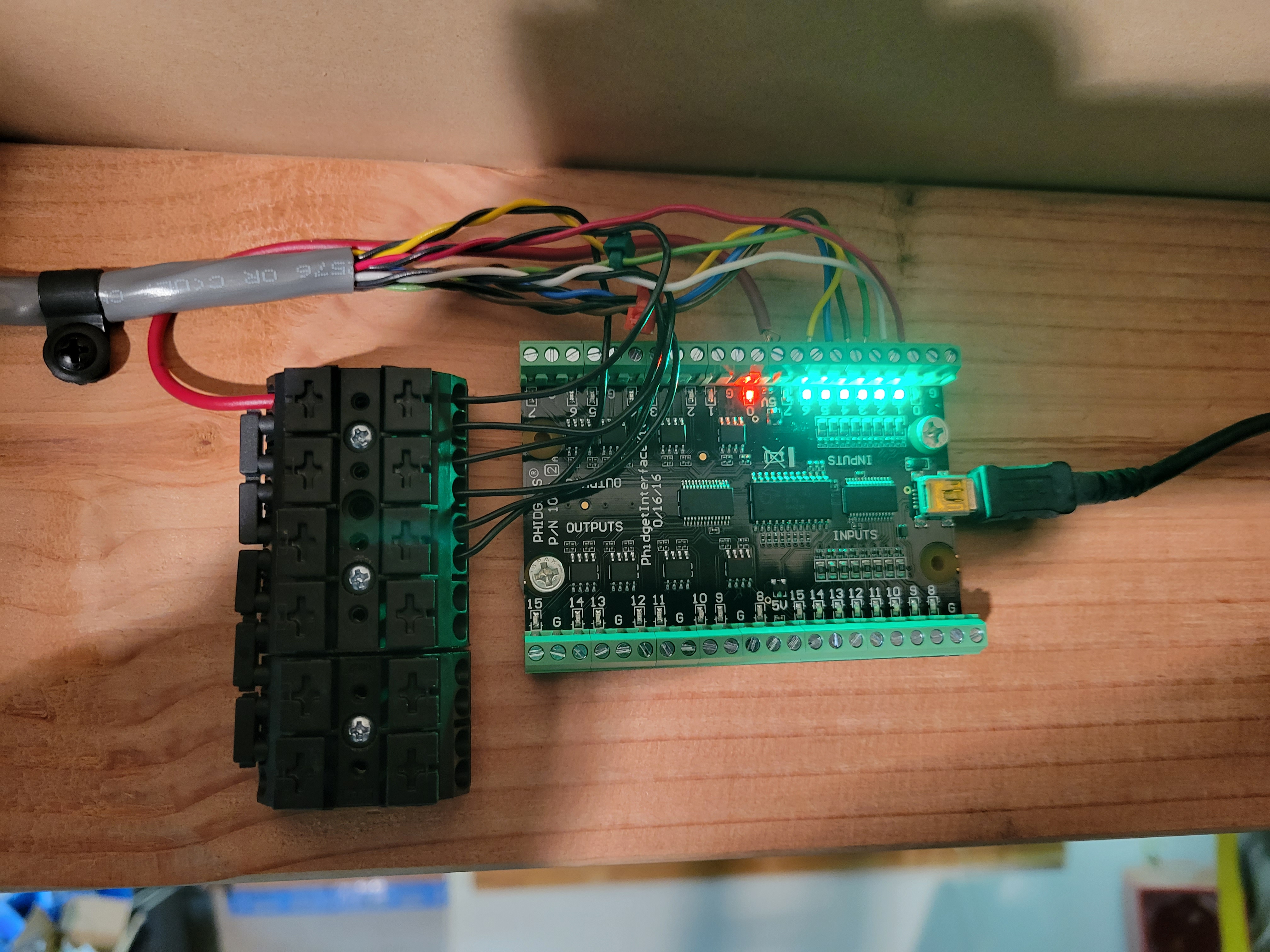 There is one technical hurdle to get over at some point. Right now, the driver can easily change the lane voltage to eight different presets, and any arbitrary setting. However, the software I currently have does not allow the Race Director to quickly switch the lane voltages back to a common track-wide setting. For now, I’ll have to connect to each lane, check the voltage, and set, if necessary the proper voltage for racing. I’m working on some code to make that process much quicker.
There is one technical hurdle to get over at some point. Right now, the driver can easily change the lane voltage to eight different presets, and any arbitrary setting. However, the software I currently have does not allow the Race Director to quickly switch the lane voltages back to a common track-wide setting. For now, I’ll have to connect to each lane, check the voltage, and set, if necessary the proper voltage for racing. I’m working on some code to make that process much quicker.
One other possible issue is that I’m testing Brad Bowman’s opinion that I could get away with just one power tap for the whole track. I actually installed three but two are powering the oval. The third connects to just about the middle of the road course, which means the whole 75-feet of road course only has two power taps. SR2 has eight!
So, when is SR3 going to be ready to go for a Track Day? I’m shooting for March 19 and maybe starting a new series on March 26. Stay tuned for the plan but it depends on whether or not we’ll need more power taps. We can always start the new series on SR2, if necessary.

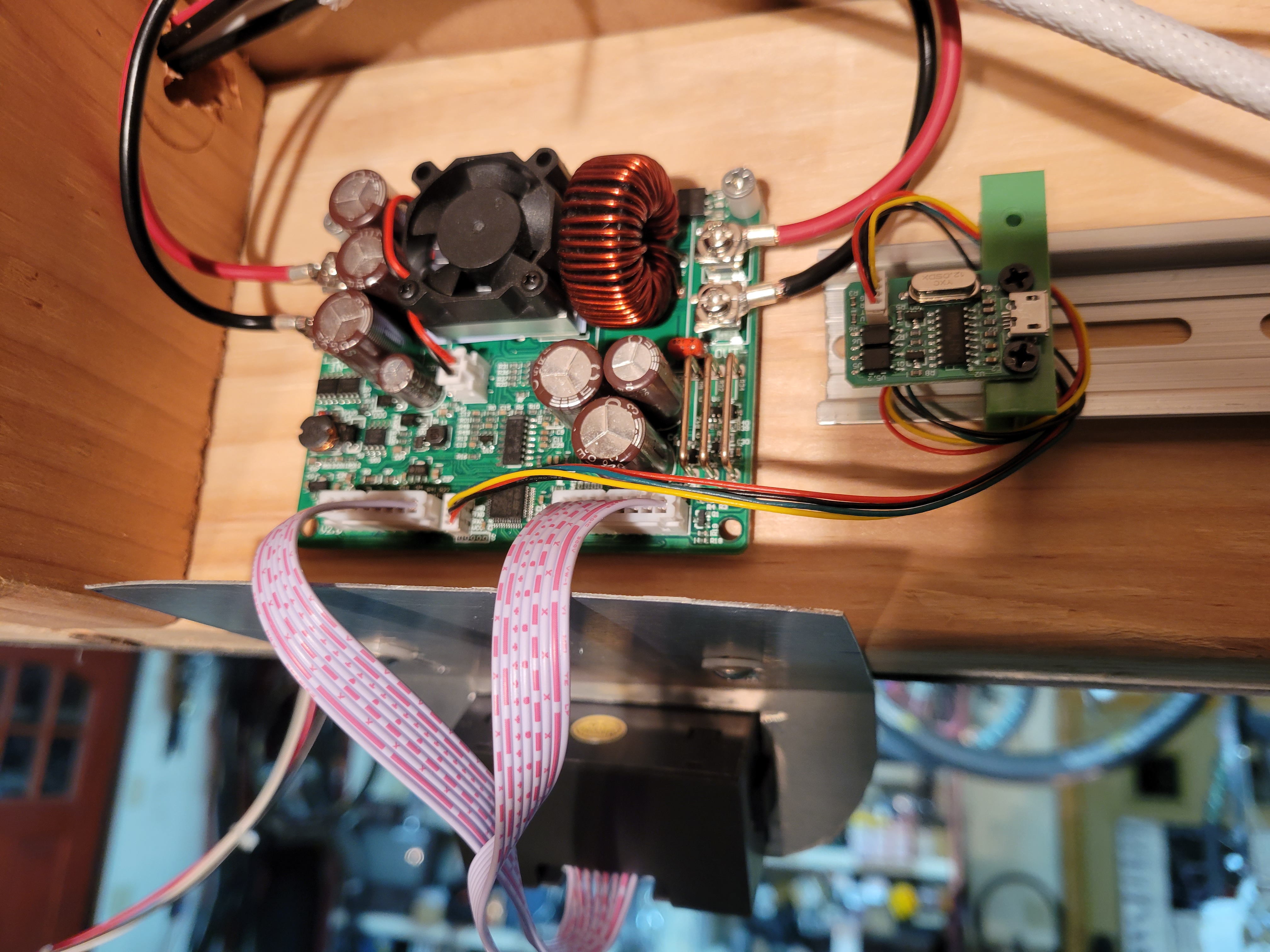 So, where are things? Well, the table and track roadway placement has been completed. The track power distribution system is complete and tested. While there are still technical hurdles to overcome, the goal of supporting different voltage levels for each lane–by the driver–has been achieved. It’s not completely ready, but drivers can select any voltage they’d like to run when testing or practicing. This means you can practice/test any car, at any voltage, at any time racing is not underway. Think about that…you no longer have to restrict yourself to 15v, 12v, 20v, or whatever. You can go to any open lane, set the “lane” voltage (at the driver station), and run your car.
So, where are things? Well, the table and track roadway placement has been completed. The track power distribution system is complete and tested. While there are still technical hurdles to overcome, the goal of supporting different voltage levels for each lane–by the driver–has been achieved. It’s not completely ready, but drivers can select any voltage they’d like to run when testing or practicing. This means you can practice/test any car, at any voltage, at any time racing is not underway. Think about that…you no longer have to restrict yourself to 15v, 12v, 20v, or whatever. You can go to any open lane, set the “lane” voltage (at the driver station), and run your car. Other than six lanes, and a much larger layout, SR3 is expected to support the same racing features that SR2 supports. One small difference will be a slight increase in pit spacing. SR3’s dual gantries will be spread slightly further apart to compensate for the higher pit entry speeds.
Other than six lanes, and a much larger layout, SR3 is expected to support the same racing features that SR2 supports. One small difference will be a slight increase in pit spacing. SR3’s dual gantries will be spread slightly further apart to compensate for the higher pit entry speeds.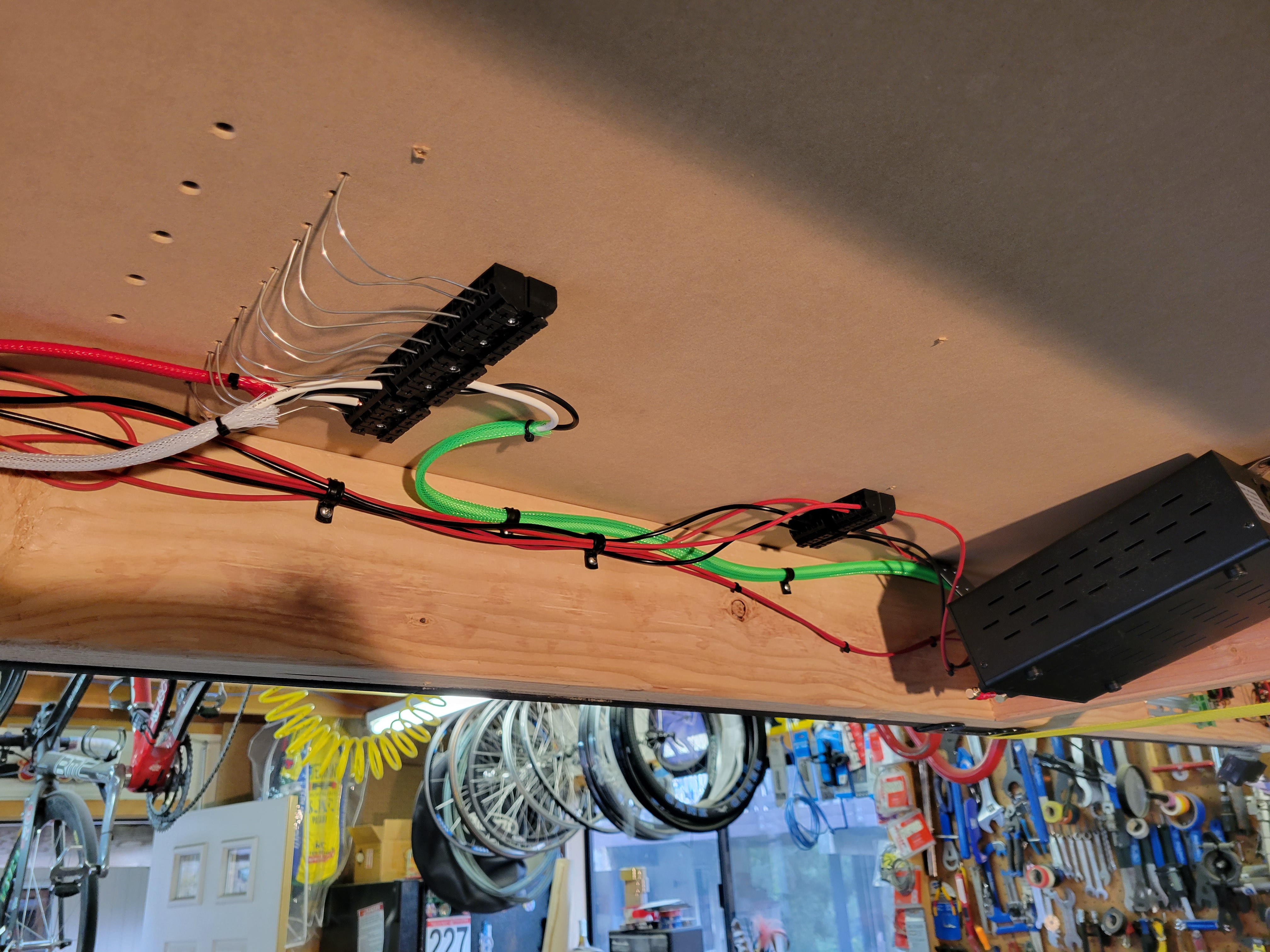
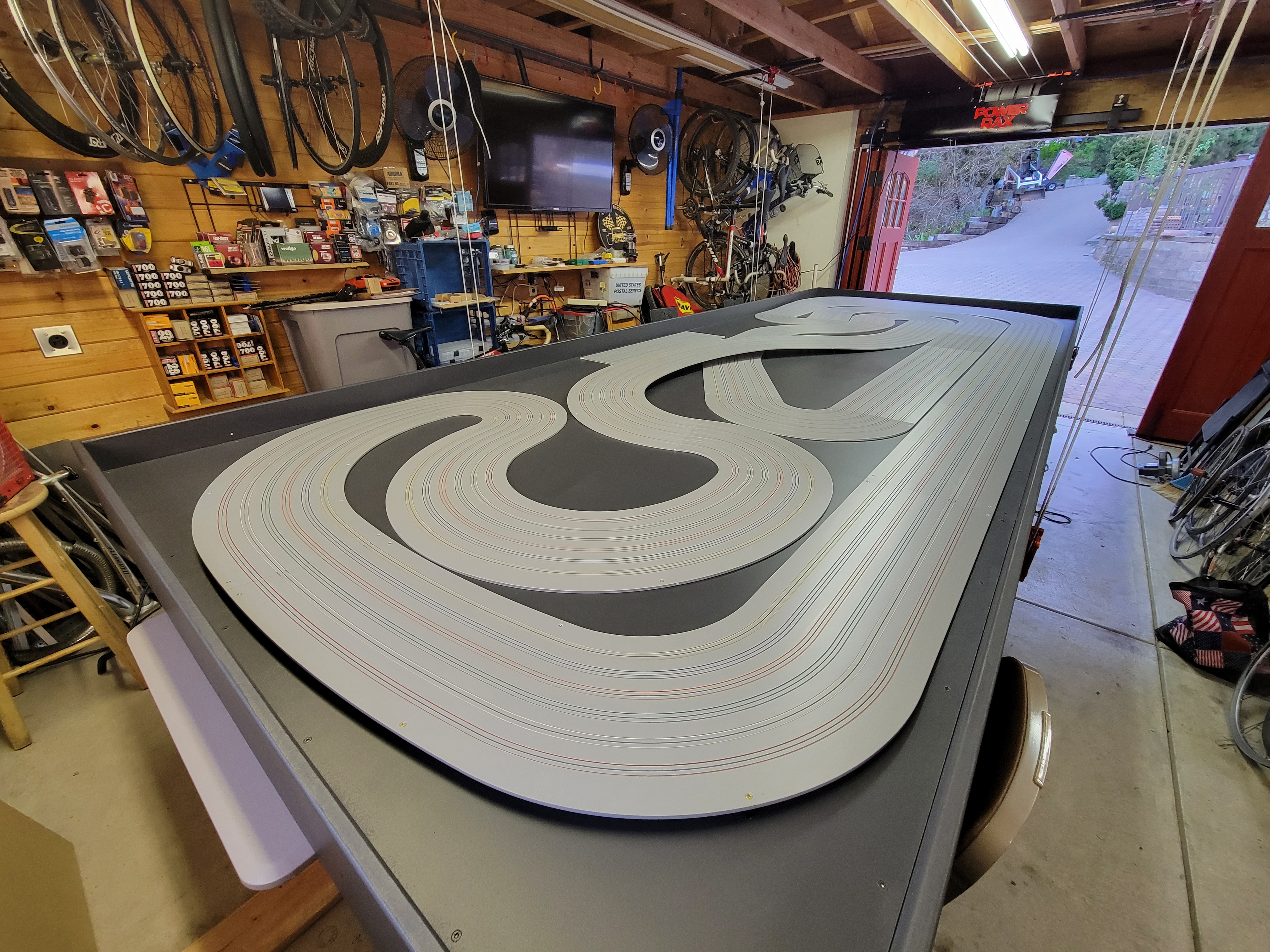 So, SR3 is coming along nicely. My garage is a complete disaster but the new track is going to be quite cool. Yea, lots more work to do, but it’s getting close. Really only need to wire the gantries up and I can start testing things. The 6-lane, dual gantry setup adds some complexity and delay. I had planned to just use the usual RJ-45 twisted-pair cable to handle that but RJ-45 only provides 4-pair, which doesn’t quite handle a 6-lane dual gantry setup (need 6-pair x2). Yea, yea, I could make it work but decided to find some 6-pair cable to handle this. Sadly, it’ll take a week or so to arrive.
So, SR3 is coming along nicely. My garage is a complete disaster but the new track is going to be quite cool. Yea, lots more work to do, but it’s getting close. Really only need to wire the gantries up and I can start testing things. The 6-lane, dual gantry setup adds some complexity and delay. I had planned to just use the usual RJ-45 twisted-pair cable to handle that but RJ-45 only provides 4-pair, which doesn’t quite handle a 6-lane dual gantry setup (need 6-pair x2). Yea, yea, I could make it work but decided to find some 6-pair cable to handle this. Sadly, it’ll take a week or so to arrive.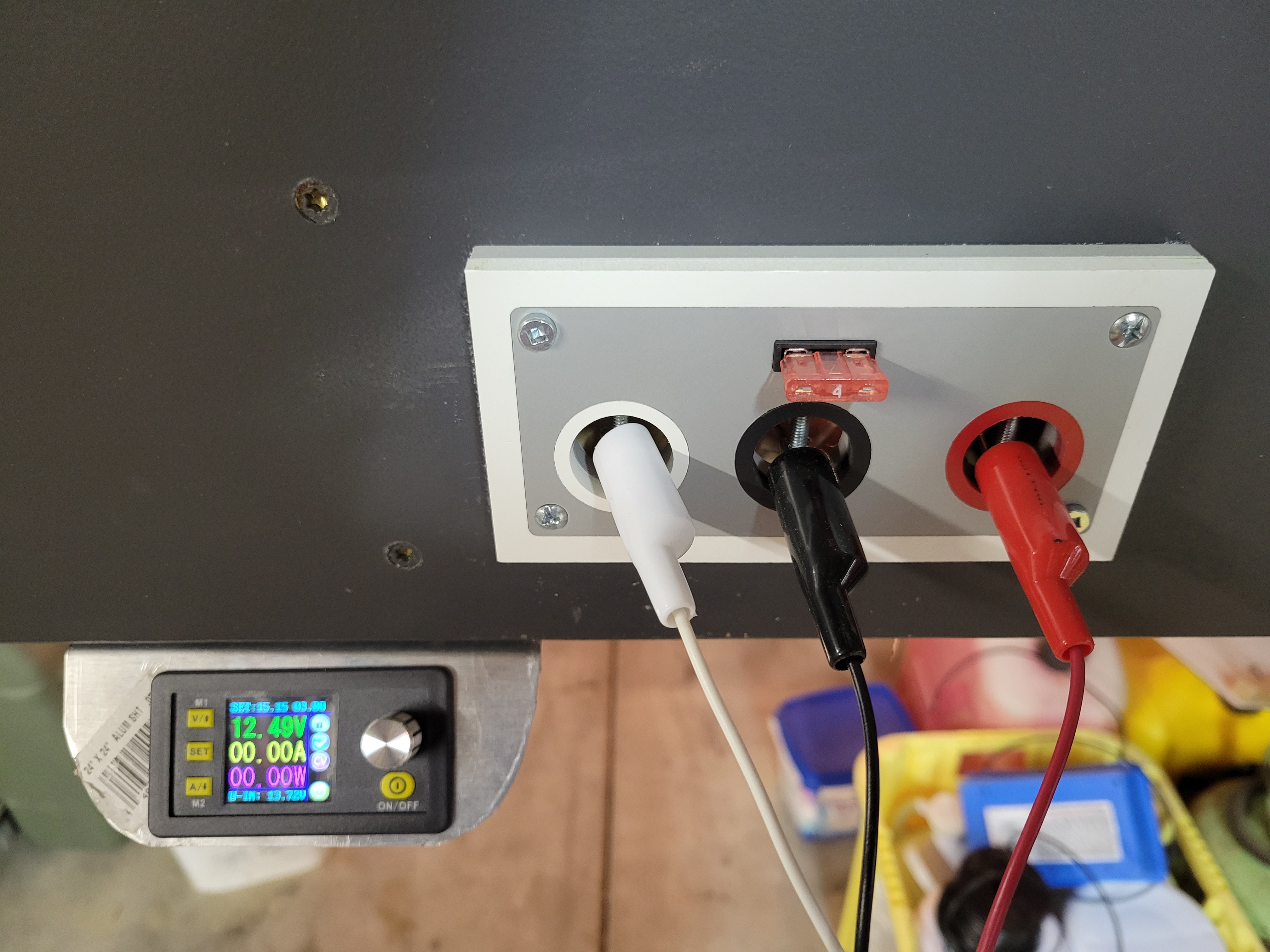 Finally able to get back to work on the new track this week. Not a lot of progress but I was able to wire up one driver’s station and test the individual lane voltage control hardware.
Finally able to get back to work on the new track this week. Not a lot of progress but I was able to wire up one driver’s station and test the individual lane voltage control hardware.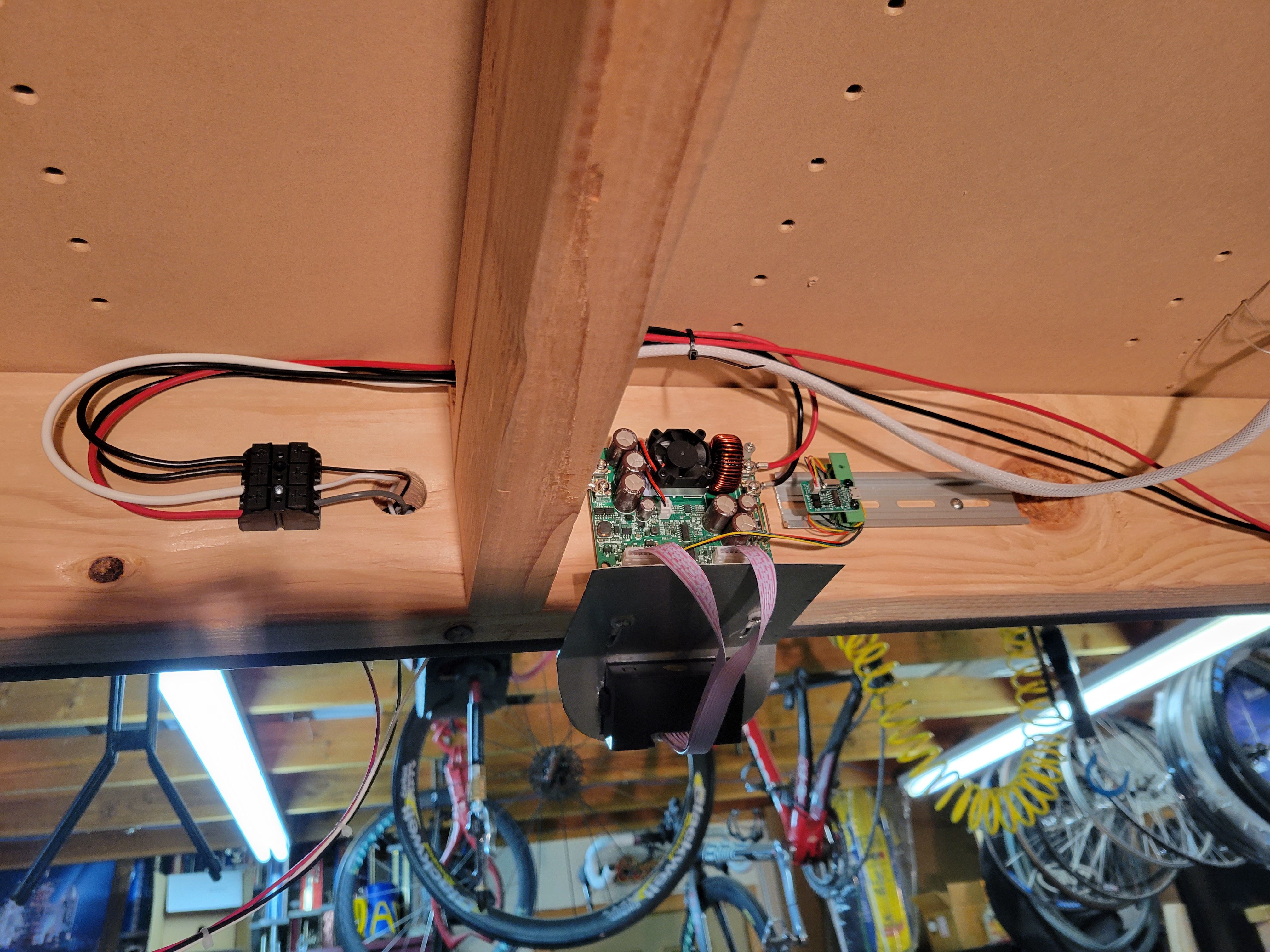 The initial hardware will support two preset voltage selections and a variable voltage setting. The track will be fed by two 30VDC, 10-amp, regulated power supplies: one for lanes 1, 2, and 3; the other on the opposite side of the track supplying power to lanes 4, 5, and 6.
The initial hardware will support two preset voltage selections and a variable voltage setting. The track will be fed by two 30VDC, 10-amp, regulated power supplies: one for lanes 1, 2, and 3; the other on the opposite side of the track supplying power to lanes 4, 5, and 6.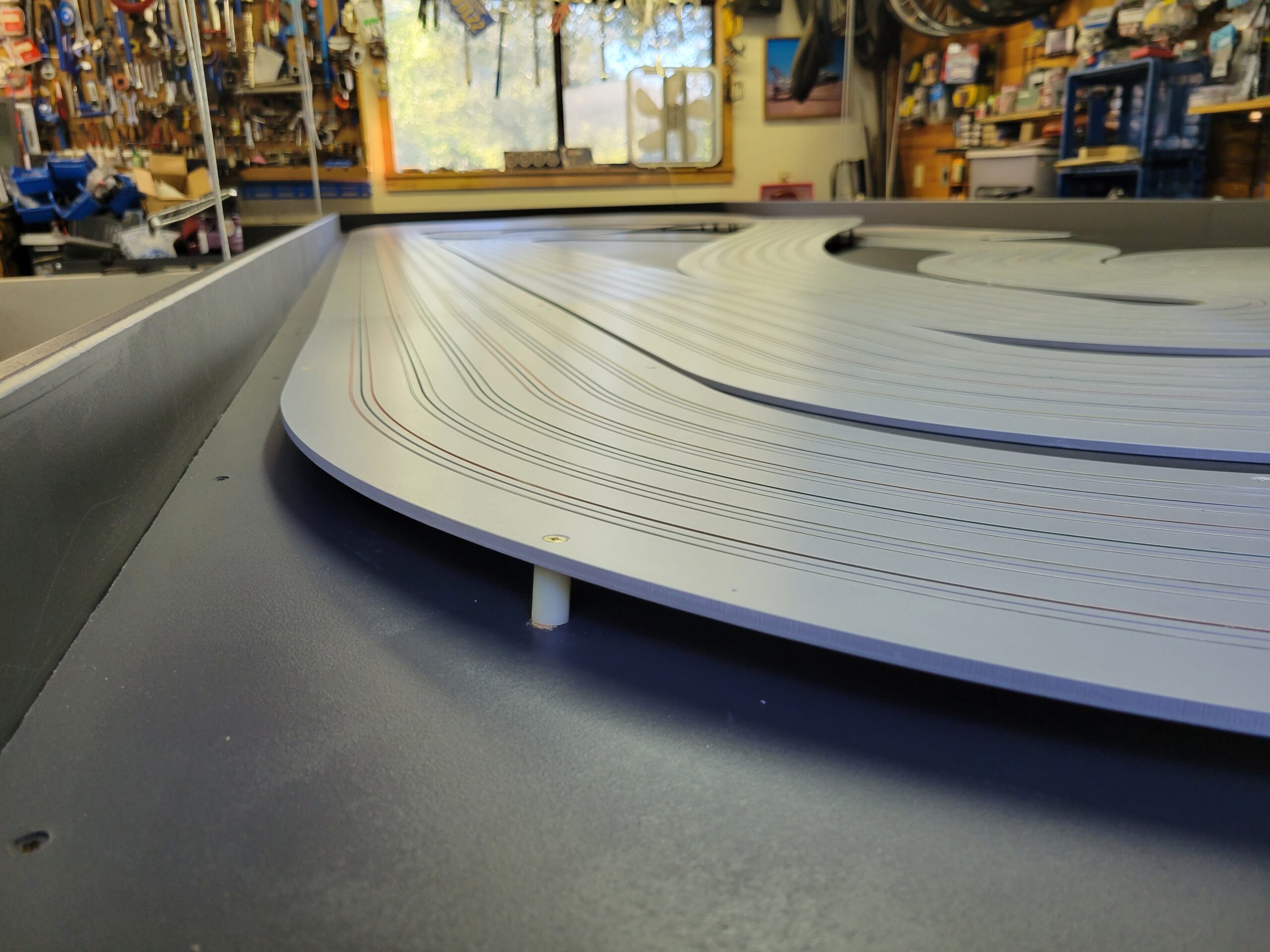


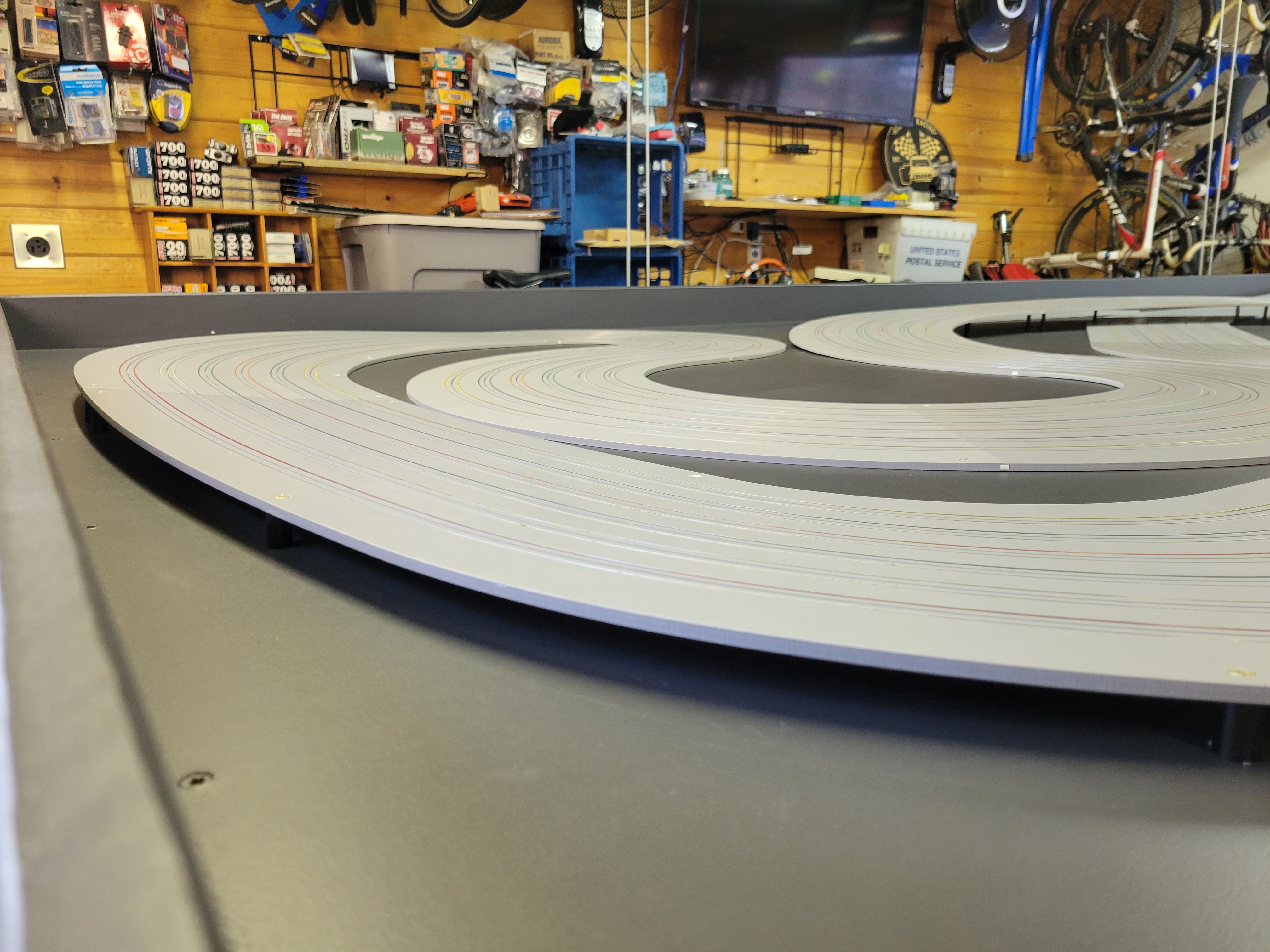
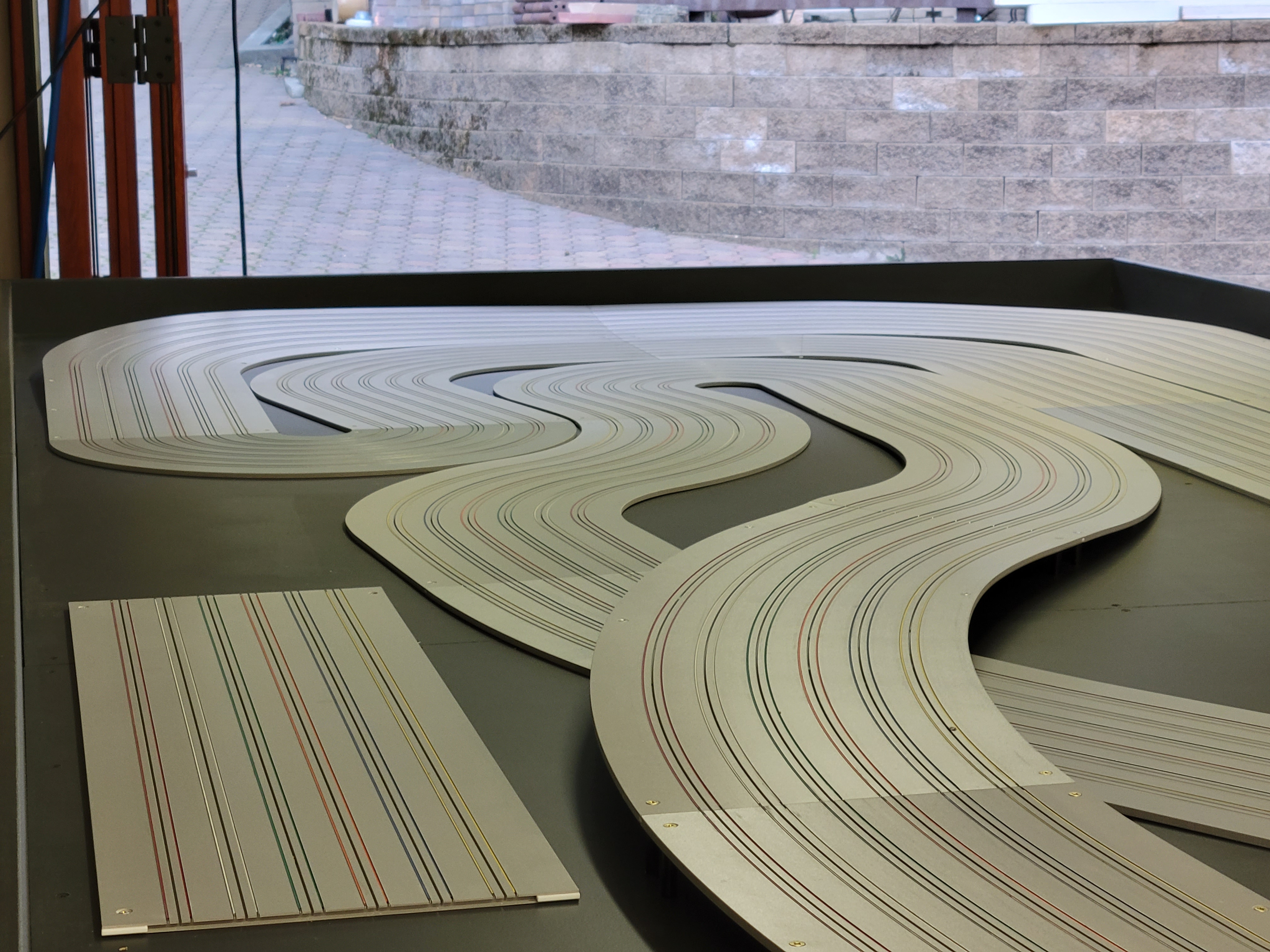
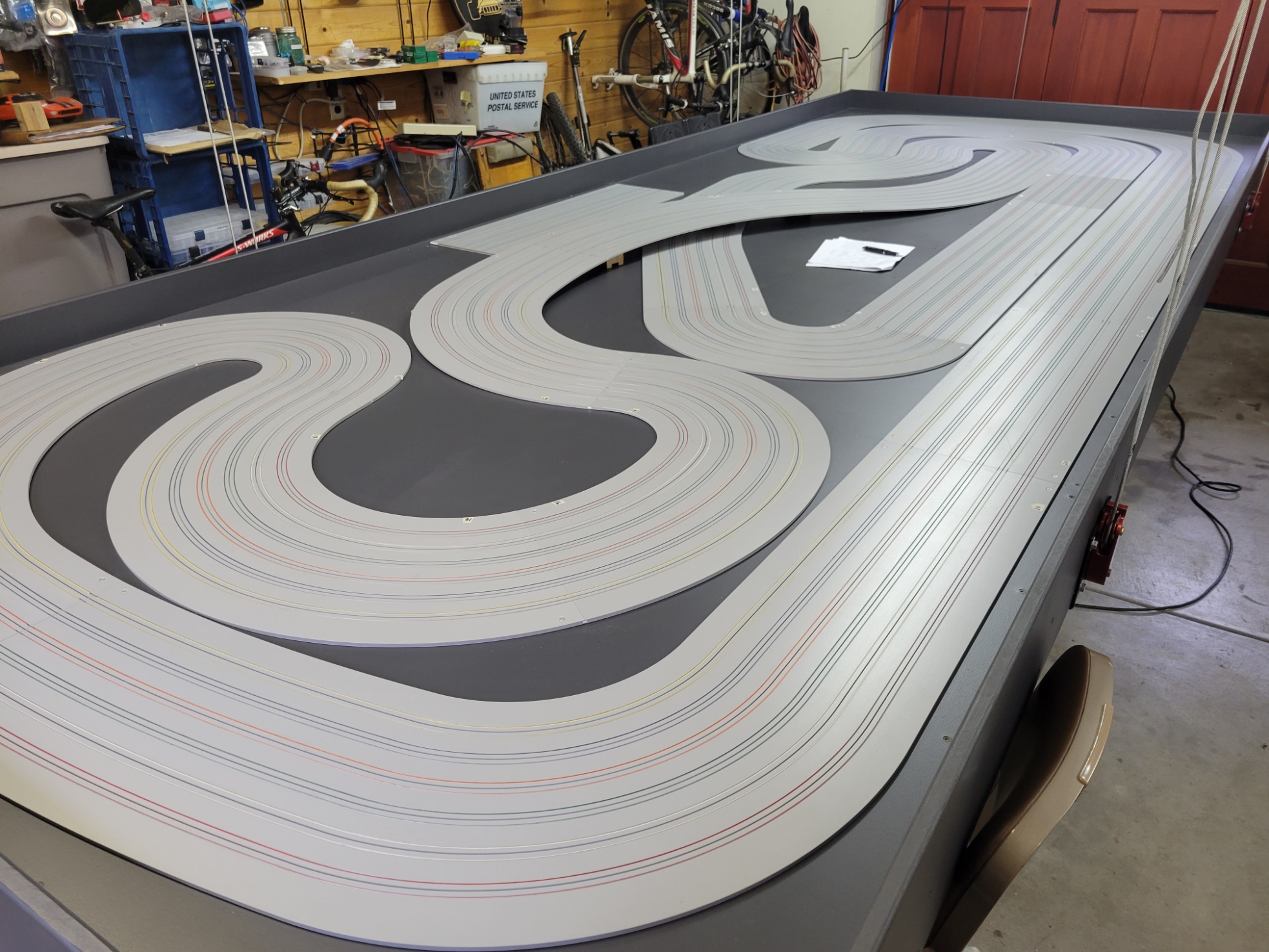
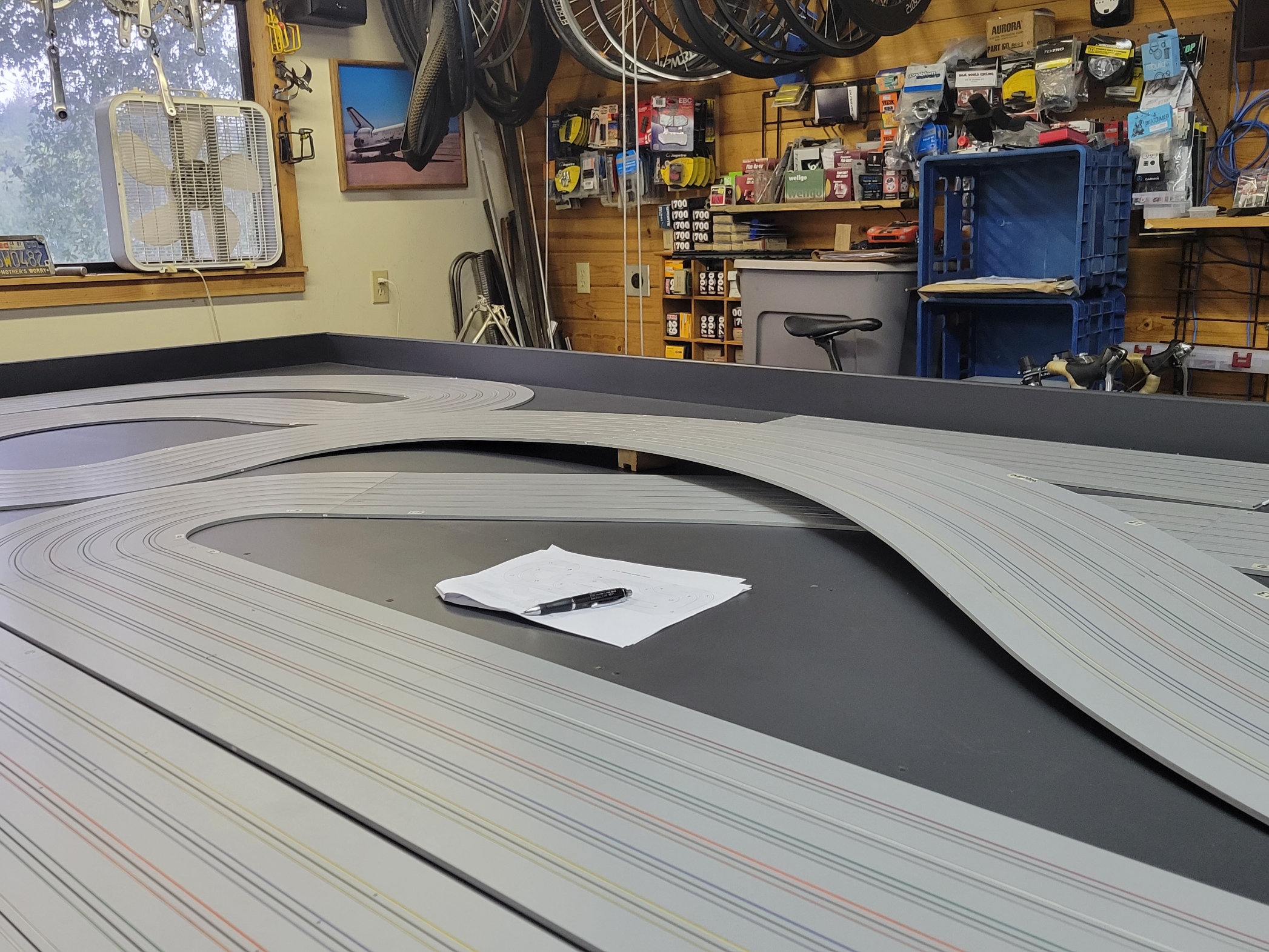
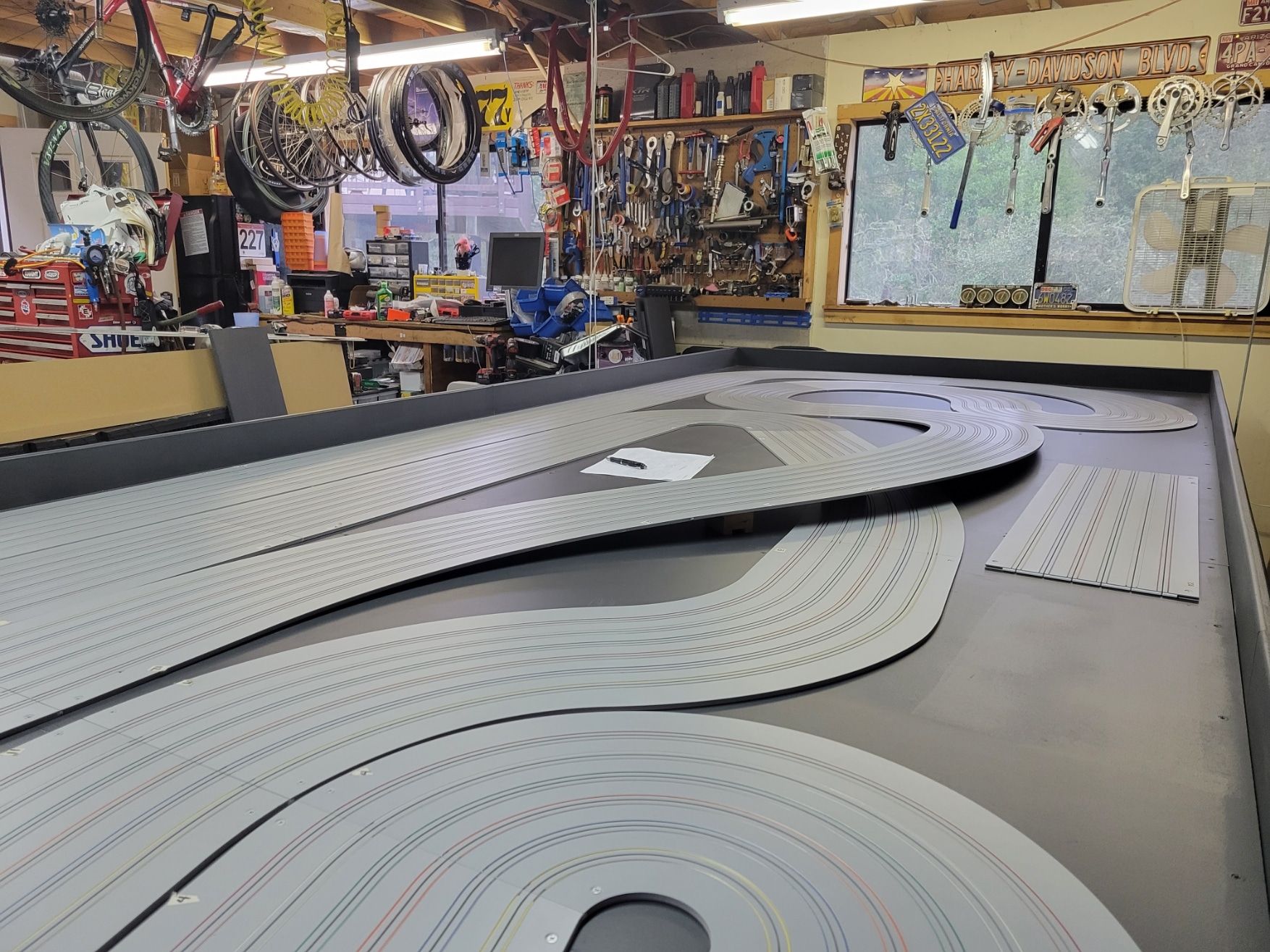
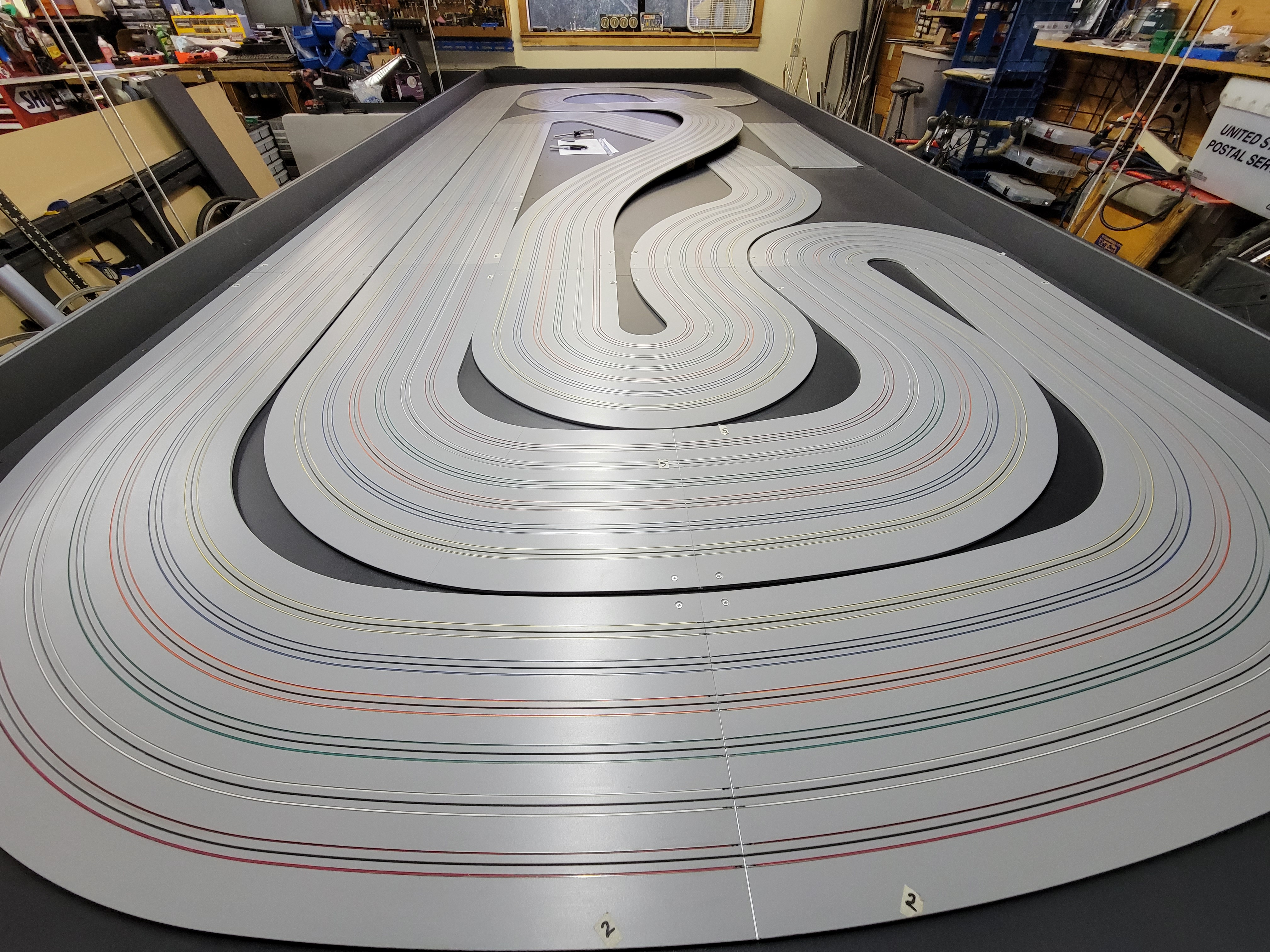 Once I get this stage completed, it’ll be time to secure each track piece completely to the table and then start the basic track and power tap wiring. I’m planning a “Phase 1” power solution for the track opening, which will be at least the same power control setup we have on the SR2 VSR track. Phase 2 will be driver-selectable voltage levels for each lane, from 3v to ~28v, which will also be programmable from the track computer by the race director.
Once I get this stage completed, it’ll be time to secure each track piece completely to the table and then start the basic track and power tap wiring. I’m planning a “Phase 1” power solution for the track opening, which will be at least the same power control setup we have on the SR2 VSR track. Phase 2 will be driver-selectable voltage levels for each lane, from 3v to ~28v, which will also be programmable from the track computer by the race director.